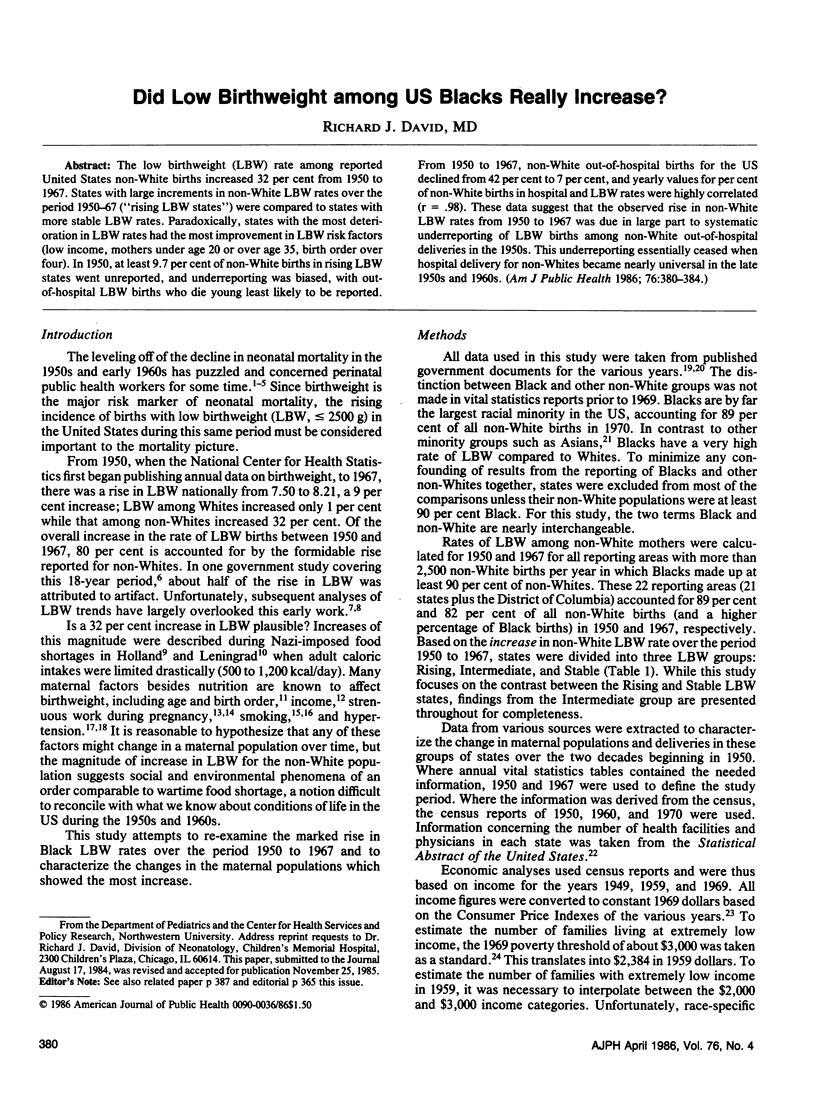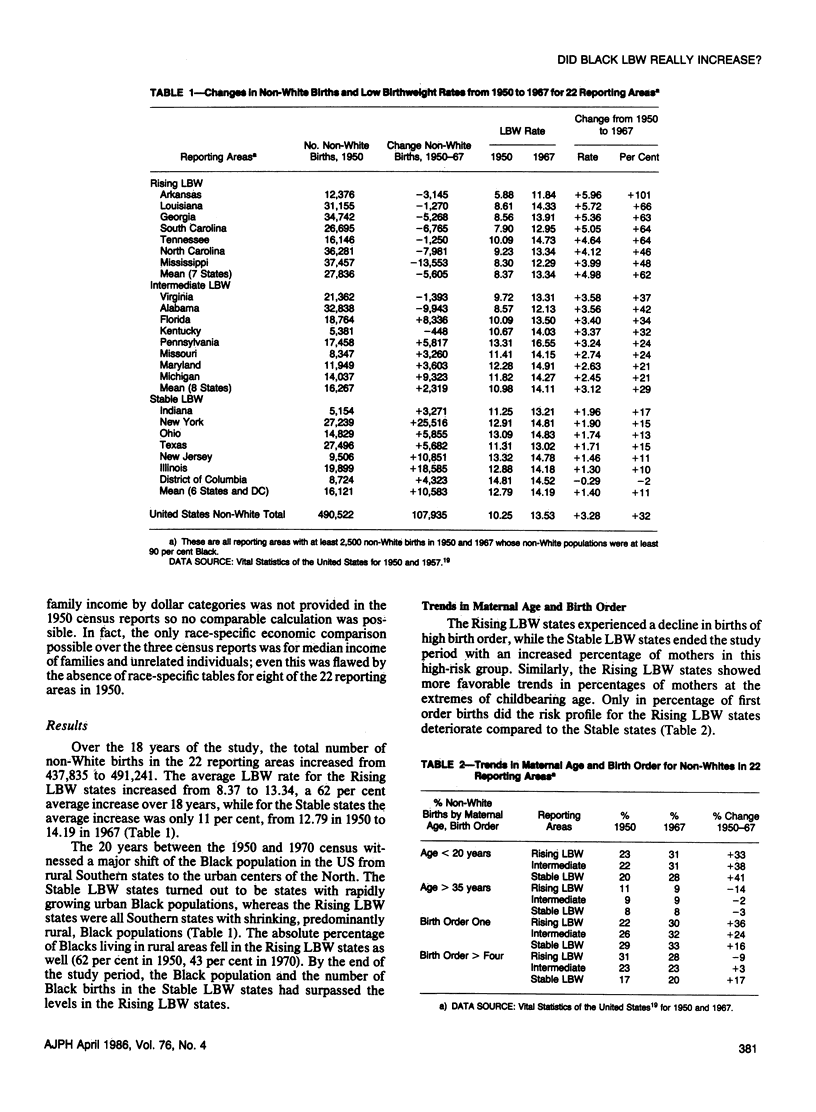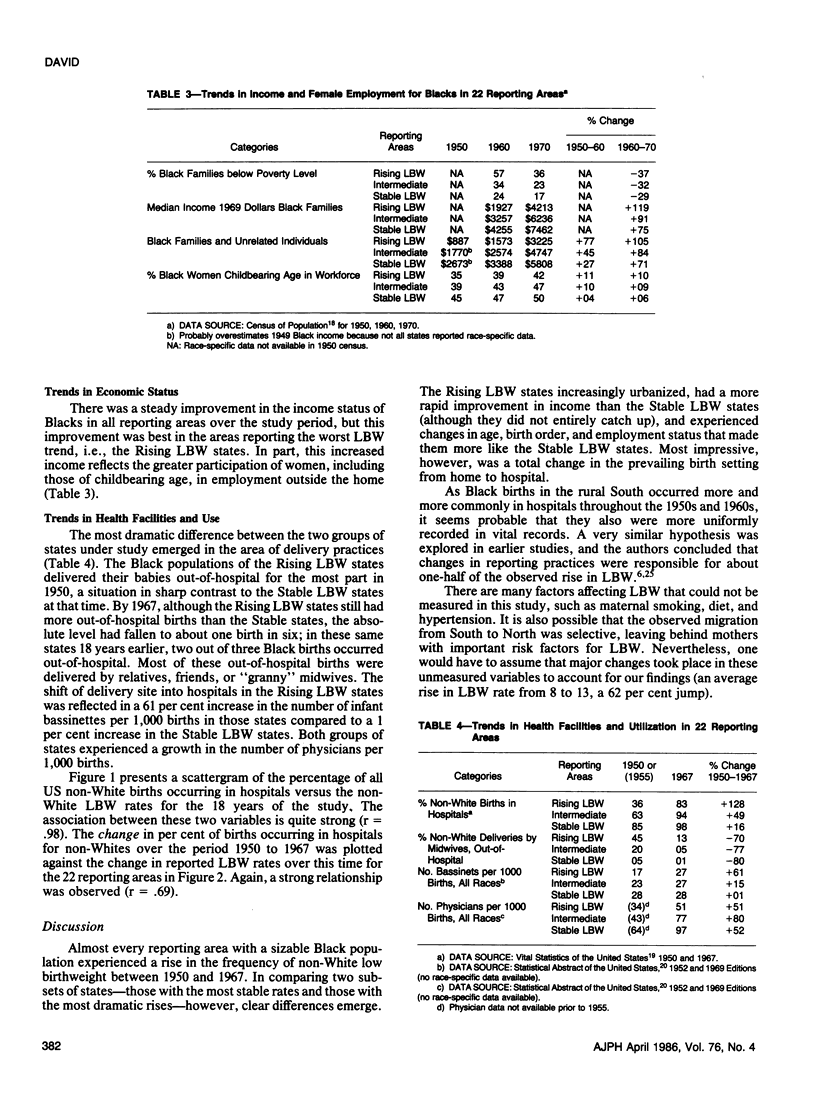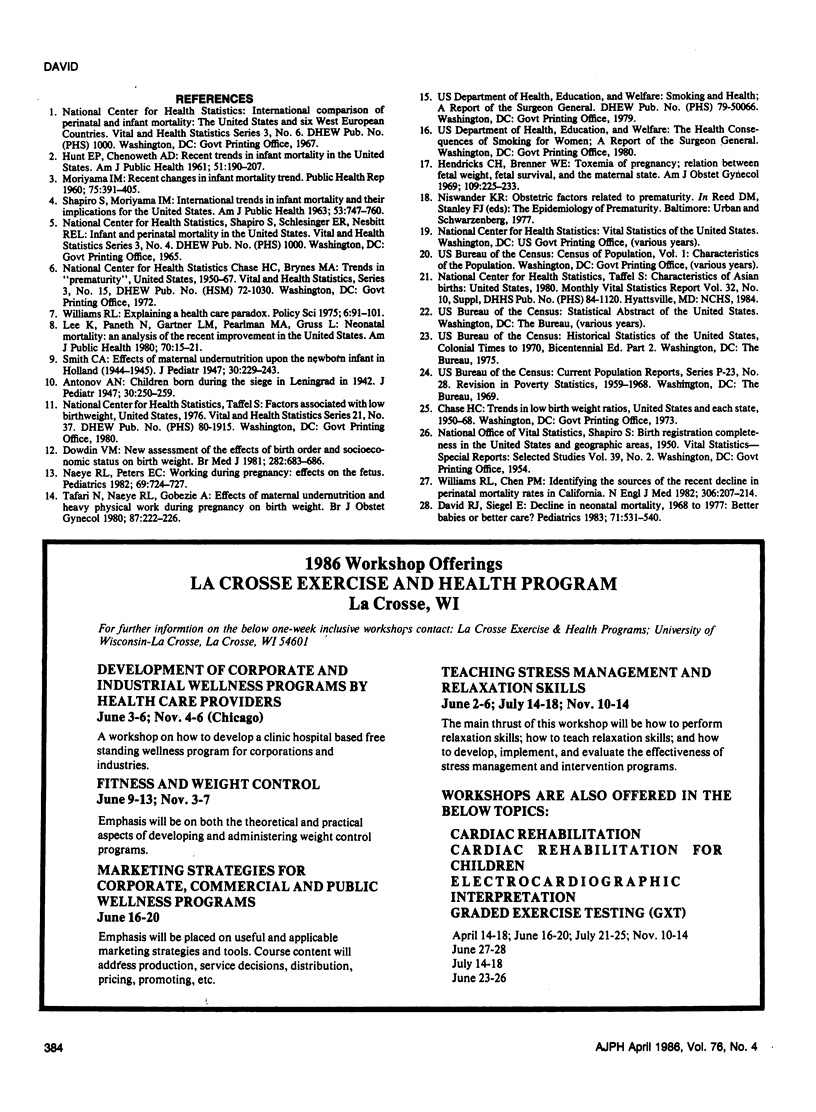Abstract
The low birthweight (LBW) rate among reported United States non-White births increased 32 per cent from 1950 to 1967. States with large increments in non-White LBW rates over the period 1950-67 ("rising LBW states") were compared to states with more stable LBW rates. Paradoxically, states with the most deterioration in LBW rates had the most improvement in LBW risk factors (low income, mothers under age 20 or over age 35, birth order over four). In 1950, at least 9.7 per cent of non-White births in rising LBW states went unreported, and underreporting was biased, with out-of-hospital LBW births who die young least likely to be reported. From 1950 to 1967, non-White out-of-hospital births for the US declined from 42 per cent to 7 per cent, and yearly values for per cent of non-White births in hospital and LBW rates were highly correlated (r = .98). These data suggest that the observed rise in non-White LBW rates from 1950 to 1967 was due in large part to systematic underreporting of LBW births among non-White out-of-hospital deliveries in the 1950s. This underreporting essentially ceased when hospital delivery for non-Whites became nearly universal in the late 1950s and 1960s.
Full text
PDF




Selected References
These references are in PubMed. This may not be the complete list of references from this article.
- David R. J., Siegel E. Decline in neonatal mortality, 1968 to 1977: better babies or better care? Pediatrics. 1983 Apr;71(4):531–540. [PubMed] [Google Scholar]
- Dowding V. M. New assessment of the effects of birth order and socioeconomic status on birth weight. Br Med J (Clin Res Ed) 1981 Feb 28;282(6265):683–686. doi: 10.1136/bmj.282.6265.683. [DOI] [PMC free article] [PubMed] [Google Scholar]
- HUNT E. P., CHENOWETH A. D. Recent trends in infant mortality in the United States. Am J Public Health Nations Health. 1961 Feb;51:190–207. doi: 10.2105/ajph.51.2.190. [DOI] [PMC free article] [PubMed] [Google Scholar]
- Hendricks C. H., Brenner W. E. Toxemia of pregnancy: relationship between fetal weight, fetal survival, and the maternal state. Am J Obstet Gynecol. 1971 Jan 15;109(2):225–233. doi: 10.1016/0002-9378(71)90871-4. [DOI] [PubMed] [Google Scholar]
- Lee K. S., Paneth N., Gartner L. M., Pearlman M. A., Gruss L. Neonatal mortality: an analysis of the recent improvement in the United States. Am J Public Health. 1980 Jan;70(1):15–21. doi: 10.2105/ajph.70.1.15. [DOI] [PMC free article] [PubMed] [Google Scholar]
- MORIYAMA I. M. Recent change in infant mortality trend. Public Health Rep. 1960 May;75:391–405. [PMC free article] [PubMed] [Google Scholar]
- Naeye R. L., Peters E. C. Working during pregnancy: effects on the fetus. Pediatrics. 1982 Jun;69(6):724–727. [PubMed] [Google Scholar]
- SHAPIRO S., MORIYAMA I. M. International trends in infant mortality and their implications for the United States. Am J Public Health Nations Health. 1963 May;53:747–760. doi: 10.2105/ajph.53.5.747. [DOI] [PMC free article] [PubMed] [Google Scholar]
- Tafari N., Naeye R. L., Gobezie A. Effects of maternal undernutrition and heavy physical work during pregnancy on birth weight. Br J Obstet Gynaecol. 1980 Mar;87(3):222–226. doi: 10.1111/j.1471-0528.1980.tb04523.x. [DOI] [PubMed] [Google Scholar]
- Williams R. L., Chen P. M. Identifying the sources of the recent decline in perinatal mortality rates in California. N Engl J Med. 1982 Jan 28;306(4):207–214. doi: 10.1056/NEJM198201283060404. [DOI] [PubMed] [Google Scholar]


